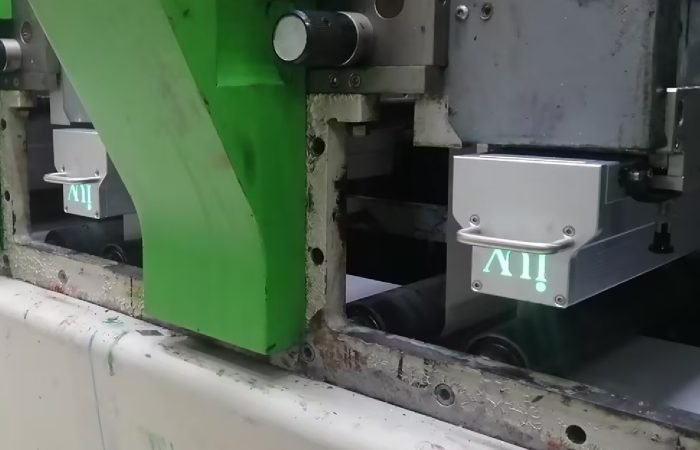Switching to UV curing systems offers significant environmental advantages for printing operations. This advanced technology is revolutionizing how we print, especially for labels, flexible packaging, and narrow-web applications. Embracing UV curing isn’t just about better print quality; it’s a powerful step towards a more sustainable future for the printing industry.
Traditional printing methods often rely on inks that contain volatile organic compounds (VOCs). These VOCs evaporate into the atmosphere during the drying process. This evaporation contributes to air pollution and can pose health risks to workers and the surrounding community. UV curing systems, on the other hand, use inks and coatings that are 100% solids. When exposed to UV light, these materials instantly polymerize, or harden, without releasing any VOCs. This means cleaner air, a safer working environment, and a reduced carbon footprint for your business.
The impact on indoor air quality is particularly noteworthy. In printing facilities that haven’t adopted UV curing, the pervasive smell of solvents can be a constant presence. This smell is a direct indicator of VOC emissions. By moving to UV, that odor disappears. Workers no longer have to breathe in potentially harmful fumes. This not only improves morale but also reduces the likelihood of respiratory issues and other health complaints. It’s a tangible improvement that affects everyone in the facility on a daily basis.
Energy efficiency is another compelling environmental benefit. While traditional drying methods often require significant heat to evaporate solvents, UV curing, particularly LED UV, uses focused light energy. LED UV lamps are remarkably efficient. They generate very little heat, consume less electricity, and have a much longer lifespan than traditional mercury vapor lamps. This means lower energy bills and a smaller environmental impact from electricity consumption. The ability to run printing presses at higher speeds with UV curing also contributes to overall production efficiency, further reducing energy per unit printed.
Consider the world of narrow-web printing, which is crucial for labels and flexible packaging. These applications demand high print quality, durability, and fast turnaround times. UV curing excels in all these areas. It allows for vibrant colors, sharp details, and scuff-resistant finishes that are essential for brand presentation. The instant curing means that printed materials are ready for the next process or for shipping almost immediately. This eliminates the need for extended drying times and large curing ovens, which consume valuable floor space and energy.
In flexographic printing, a workhorse for labels and packaging, UV inks are a game-changer. They provide excellent adhesion to a wide range of substrates, from paper and film to foil. The rapid curing of UV inks on flexo presses allows for faster speeds and shorter runs, making it economically viable to print shorter print runs more frequently. This flexibility is a significant advantage in today’s market, where product customization and shorter product life cycles are common. The absence of VOCs in UV flexo inks also means that printers can comply with stricter environmental regulations more easily.
Offset printing, or lithographic printing, also benefits immensely from UV curing. Sheetfed offset presses equipped with UV curing units can handle a diverse array of paper stocks and coatings. The instant drying allows for immediate stacking of printed sheets, preventing smudging and doubling. This is particularly useful for high-quality packaging, commercial print, and specialty applications where the finish and handling of the printed piece are paramount. The ability to print on non-absorbent substrates like plastics and metal with UV offset inks opens up new product possibilities.
The durability of UV-cured prints is another environmental plus. Because the inks and coatings are highly resistant to abrasion, chemicals, and fading, the printed products last longer. This means fewer items are discarded due to premature wear or damage. For labels and packaging, this extended lifespan ensures that the product inside is protected and the branding remains intact throughout its journey to the consumer. It contributes to reducing waste throughout the supply chain.
Furthermore, the waste generated by UV curing processes is often reduced. With traditional solvent-based inks, there’s a need for cleaning solvents and disposal of ink waste. UV inks, being 100% solids, can often be cleaned from the press with less aggressive solutions, and the ink itself is less prone to drying out and becoming unusable in the ink fountains or on the printing plates. This leads to less chemical waste and more efficient use of materials.
The transition to UV curing systems, especially LED UV, aligns with a growing global emphasis on sustainability and corporate social responsibility. Consumers and businesses are increasingly demanding eco-friendly products and services. By adopting UV curing, printing companies can demonstrate their commitment to environmental stewardship. This can be a powerful marketing tool, attracting environmentally conscious clients and differentiating their business from competitors.
The investment in UV curing technology is an investment in a cleaner, more efficient, and more sustainable printing future. It addresses key environmental concerns related to air quality, energy consumption, and waste reduction. For any printing operation looking to improve its environmental performance while simultaneously enhancing print quality and operational efficiency, the move to UV curing systems is a clear and compelling choice. It’s a forward-thinking approach that benefits the planet, the workforce, and the bottom line.












